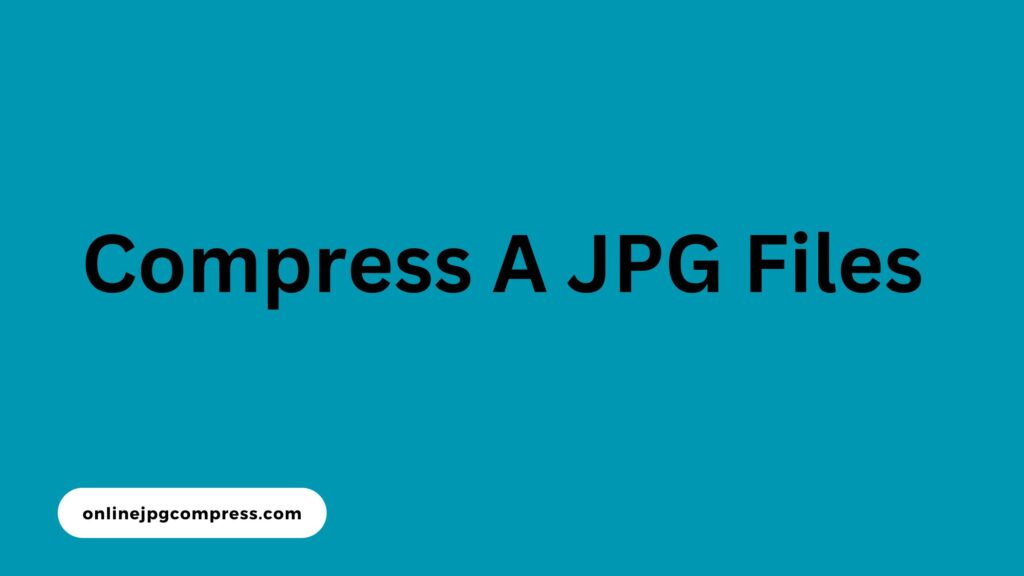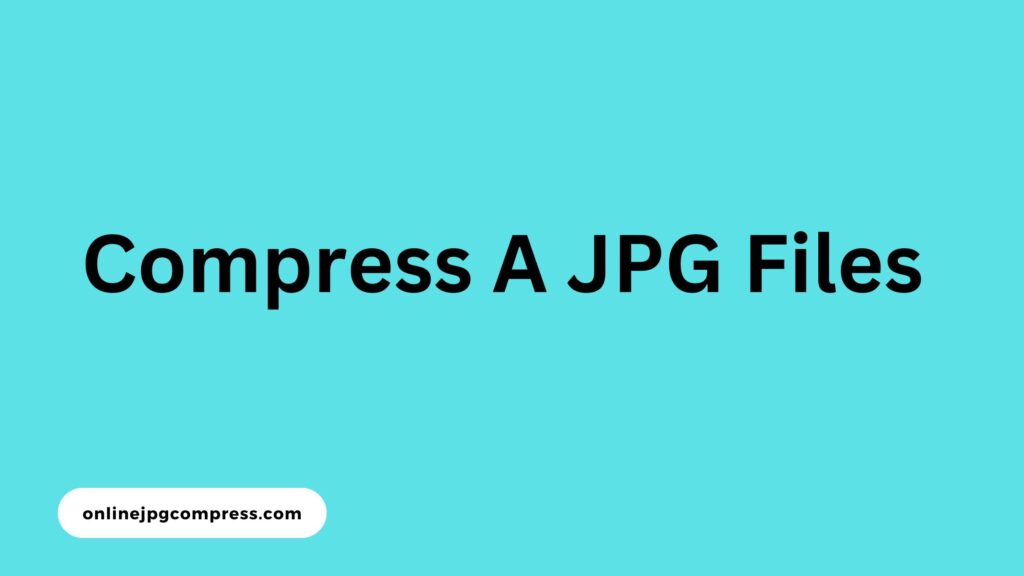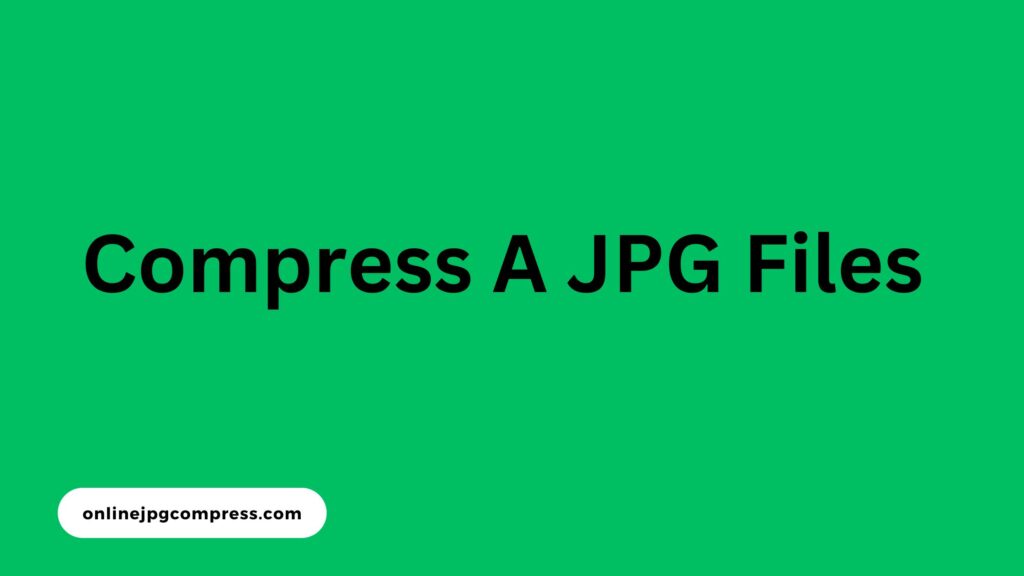Introduction
In a digital era where visuals dominate, optimizing image Compress a JPG File is crucial for faster loading times and improved user experiences. One essential skill every online user should possess is the ability to compress JPG files effectively.
In this comprehensive guide, we’ll explore the importance of Compress JPG File, the benefits it brings to web performance, and step-by-step instructions on how to accomplish this task seamlessly.
Read this – Effortless Efficiency: Mastering Compress File JPG

Why Compress a JPG File?
Improved Website Performance: Compressing JPG files is a key strategy for enhancing website performance. Smaller file sizes result in quicker loading times, reducing bounce rates and improving overall user satisfaction.
Bandwidth Efficiency: Compressed JPG files consume less bandwidth, making them ideal for websites with high traffic volumes. This optimization ensures a smooth and efficient user experience, even for visitors with slower internet connections.
Enhanced SEO: Search engines prioritize fast-loading websites. Compressing JPG files contributes to a speedier website, positively impacting search engine rankings and overall visibility.
Benefits of Compressing JPG Files
Faster Page Loading Times: Compressing JPG files significantly contributes to faster page loading times. Reduced file sizes lead to quicker rendering of images on websites, enhancing the overall user experience.
This optimization is crucial for retaining visitors, minimizing bounce rates, and ensuring seamless browsing on websites in the United States.
Reduced Storage Space: Compressing JPG files not only enhances website performance but also results in reduced storage space. Smaller file sizes mean decreased storage requirements, leading to cost savings and improved server efficiency.
This optimization is especially beneficial for website owners in the United States looking to manage their storage resources more efficiently.
Mobile-Friendly Performance: Compressed JPG files play a pivotal role in ensuring mobile-friendly performance.
With the increasing reliance on mobile devices, optimizing images for smaller file sizes contributes to quicker loading times on smartphones and tablets.
This enhancement is crucial for delivering a seamless and responsive browsing experience to users in the United States.

How to Compress a JPG File – Step by Step
Step 1: Choose the Right Tool Selecting: the appropriate JPG compression tool is crucial for effective file optimization. Various online tools and software, such as TinyPNG, JPEG-Optimizer, and Adobe Photoshop, offer different features and customization options.
Choosing the right tool ensures a smooth compression process, tailored to your preferences and requirements in the United States.
Step 2: Upload or Open the JPG File: After selecting a compression tool, initiate the process by uploading or opening the JPG file you intend to compress.
This step is pivotal in starting the optimization journey, allowing the chosen tool to access and process the image according to your specified compression settings. Ensure a seamless process for effective file compression.
Step 3: Adjust Compression Settings: Fine-tune the compression process by adjusting settings according to your preferences. Most compression tools provide customization options, allowing you to strike a balance between file size reduction and image quality.
Tailoring compression settings ensures the desired outcome, meeting specific requirements for your JPG file while optimizing for faster loading times in the United States.
Step 4: Preview and Compare: Before finalizing the compression, take advantage of the preview feature to assess the compressed JPG file. Compare it side by side with the original to ensure that the desired image quality is maintained.
This step guarantees that the compression settings align with your standards before proceeding, enhancing control over the optimization process.
Step 5: Download the Compressed JPG File: Once satisfied with the preview and comparison, proceed to download the compressed JPG file. Most compression tools provide a straightforward option to save the optimized image to your device.
This final step ensures that the compressed file is readily available for use, contributing to improved website performance and faster loading times.

Conclusion
Compressing a JPG file is a fundamental skill for anyone involved in digital content creation or website management. With the importance of fast-loading websites in the competitive online landscape, mastering JPG compression becomes a strategic advantage.
Follow these steps, choose the right compression tool, and unlock the potential for improved website performance, reduced storage costs, and enhanced user satisfaction.
Stay ahead in the digital realm by making compression a routine practice for your JPG files in the United States and beyond.
